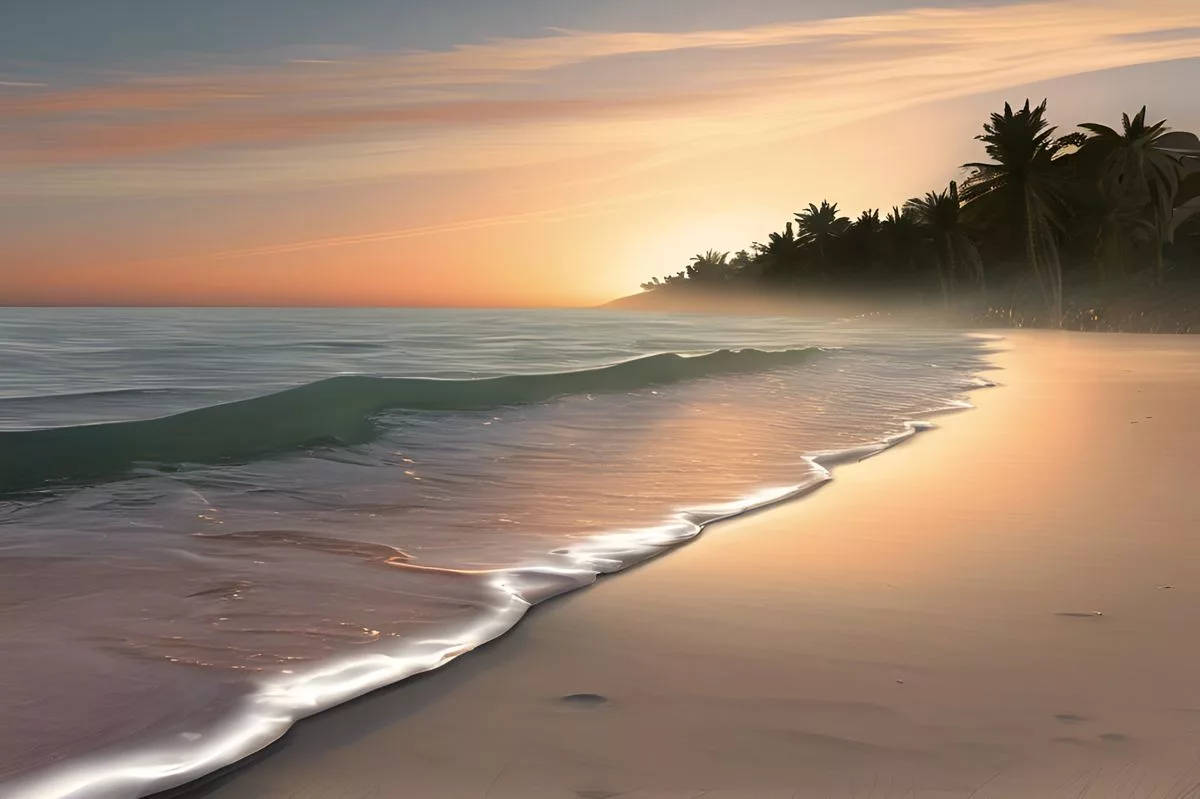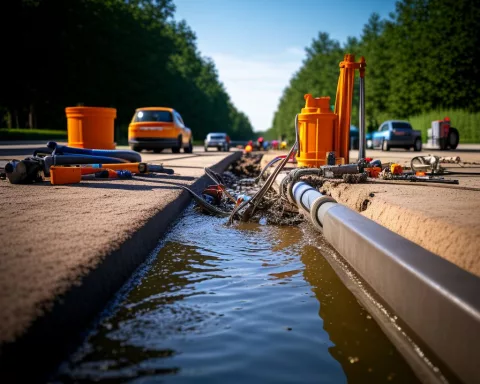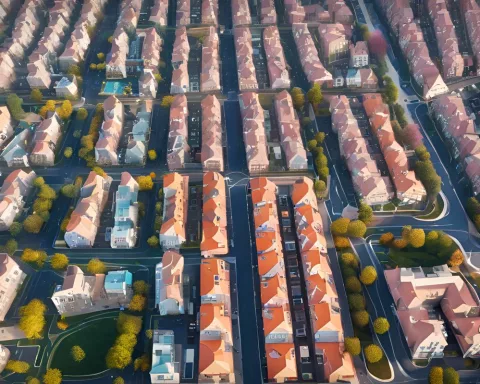Cape Town’s Annual Beach-Lowering Program is a special event that happens every year from October 1 to November 8. This initiative helps keep the beaches beautiful and safe by lowering sand levels, which stops sand from blowing onto roads and buildings. The program takes place at popular spots like Fish Hoek, Muizenberg, Gordon’s Bay, and Bikini Beach, ensuring there’s plenty of room for fun activities while protecting the environment. With this careful management, Cape Town’s coastlines stay vibrant and welcoming for everyone to enjoy!
What is Cape Town’s Annual Beach-Lowering Program?
Cape Town’s Annual Beach-Lowering Program is an ecological initiative that re-profiles beaches from October 1 to November 8. It aims to reduce windblown sand intrusion while enhancing recreational space, ensuring a balance between urban development and coastal preservation along popular locations like Fish Hoek, Muizenberg, Gordon’s Bay, and Bikini Beach.
Cape Town, celebrated for its breathtaking coastlines and rich cultural diversity, engages in an annual practice that blends ecological preservation with urban development: the beach-lowering program. This year, the City of Cape Town’s Coastal Management Branch will oversee this significant initiative from October 1 to November 8. The project will cover picturesque locations from Fish Hoek to Muizenberg and Gordon’s Bay to Bikini Beach, all aimed at balancing nature’s needs with human recreation.
The Art and Science of Beach-Lowering
Beach-lowering, commonly known as re-profiling, has become an essential practice for coastal cities around the world. In Cape Town, this approach is especially critical due to the city’s unique geographical and climatic conditions. The procedure involves lowering the sand levels on the beaches to ensure larger areas remain wet during high tides, which significantly reduces the intrusion of windblown sand—a perennial issue in coastal regions.
Cape Town draws inspiration from historical coastal management techniques, such as the Netherlands’ advanced water engineering and the UK’s coastal defenses. The city’s method resembles a meticulously choreographed dance with nature, executed with precision to safeguard urban infrastructure from sand encroachment while preserving the beaches for public enjoyment.
Historically, coastal interventions have been guided by a blend of scientific understanding and practical experience. Cape Town’s re-profiling strategy reflects this blend, harmonizing the needs of the natural environment with the demands of urban life. By doing so, the city ensures that both ecosystems thrive, benefiting residents and visitors alike.
A Journey Along the Coastline
The re-profiling process kicks off at Fish Hoek, extending from Jagger’s Walk near the famed Galley restaurant to the stormwater outlet next to the main parking area. Fish Hoek, known for its quaint charm, exemplifies Cape Town’s coastal allure. During high tides, the reprofiled beach welcomes waves, preventing sand from encroaching onto the busy promenade. This ensures that the beach remains a cherished spot for both locals and tourists.
Moving further along the coast, Muizenberg stands out with its rich history and contemporary surf culture. The beach-lowering extends from Surfer’s Corner to the Zandvlei River mouth. Muizenberg’s iconic colorful beach huts and vibrant surf community reflect Cape Town’s eclectic spirit. Maintaining optimal sand levels here ensures that this renowned beach continues to be a haven for surfers and families, free from the disruptive effects of drifting sand.
In Gordon’s Bay, the re-profiling stretches from the Spur restaurant to the northern end of the parking area. Framed by the rugged Helderberg mountains, this picturesque beach offers a serene escape from urban hustle and bustle. The annual sand management process here preserves the beach’s tranquility, making it a sanctuary for wildlife and a peaceful retreat for visitors.
Bikini Beach
Bikini Beach, renowned for its intimate and secluded atmosphere, also undergoes re-profiling. This serene spot, frequented by sunbathers and swimmers, maintains its pristine condition through diligent management. The annual sand-lowering not only keeps the beach looking beautiful but also protects its ecological balance, ensuring it remains a treasured haven for all who visit.
Harmonizing Human and Natural Worlds
Eddie Andrews, Cape Town’s Deputy Mayor and Mayoral Committee Member for Spatial Planning and Environment, emphasizes the importance of this annual initiative. “Lowering of beach levels takes place annually and enables greater areas of the beach to be wet during high tides, therefore limiting the potential for wind-blown sand to inundate adjacent roads and infrastructure,” he explains. This strategy embodies a broader philosophy that integrates urban planning with environmental conservation.
Cape Town’s coastal management strategy is inspired by both historical and modern practices. The city’s efforts reflect the Renaissance ideal of balancing human activity with natural forces. Much like Leonardo da Vinci’s intricate designs for managing water flow, Cape Town’s engineers and environmental scientists collaborate to create and implement these coastal interventions, ensuring the city’s natural and urban environments coexist harmoniously.
A Tapestry of Experiences
The appeal of Cape Town’s beaches extends beyond their natural beauty; they are integral to the city’s cultural and social fabric. Each beach tells a unique story and offers distinct experiences. The annual beach-lowering program not only preserves these stories but also enhances them.
Fish Hoek’s Family Appeal
Fish Hoek, with its gentle waves and family-friendly environment, symbolizes Cape Town’s inclusive spirit. The beach-lowering initiative ensures this beloved spot remains accessible and enjoyable for visitors of all ages, from children building sandcastles to grandparents taking leisurely seaside strolls.
Muizenberg’s Surfing Heritage
Muizenberg, often celebrated as the birthplace of surfing in South Africa, attracts surfers from around the globe. The re-profiling process allows surfers to enjoy the waves without the hindrance of excessive sand, preserving the beach’s status as a premier surfing destination.
Gordon’s Bay’s Natural Escapade
Gordon’s Bay, against the backdrop of dramatic mountain scenery, offers a slice of tranquility. The careful management of sand levels ensures visitors can immerse themselves in nature without urban intrusions, maintaining the beach as a peaceful retreat.
Bikini Beach’s Secluded Charm
Bikini Beach’s intimate setting makes it perfect for quiet moments and romantic sunsets. The annual sand-lowering ensures this hidden gem remains undisturbed, providing a sanctuary for those seeking solace and serenity.
The Dance of Seasons
As Cape Town transitions from winter to spring, the beach-lowering program signifies a seasonal ritual. This proactive approach to environmental stewardship ensures the preservation of the city’s natural assets for future generations.
Throughout history, civilizations have revered their coastlines, recognizing the interplay between land and sea as a source of life and inspiration. From ancient epics that celebrated the Mediterranean’s wonders to modern poets who find solace in the ocean’s rhythm, coastlines have always held a special place in human consciousness.
The Future of Coastal Management
Cape Town’s beach-lowering program exemplifies the city’s dedication to sustainable urban living. By blending historical insights, modern science, and community involvement, Cape Town has developed a model of coastal management that can inspire other cities.
As waves continue to kiss the shores and winds whisper through the dunes, Cape Town’s beaches serve as a reminder of the delicate balance between human aspirations and nature’s grandeur. The annual re-profiling is more than just maintenance—it is a celebration of this timeless harmony.
FAQ: Cape Town’s Annual Beach-Lowering Program
What is Cape Town’s Annual Beach-Lowering Program?
Cape Town’s Annual Beach-Lowering Program is an ecological initiative that runs from October 1 to November 8 each year, aimed at re-profiling beaches to reduce windblown sand intrusion and enhance recreational space. This program takes place at popular beaches such as Fish Hoek, Muizenberg, Gordon’s Bay, and Bikini Beach.
Why is the Beach-Lowering Program necessary?
The program is essential to maintain the beauty and safety of Cape Town’s beaches. By lowering sand levels, it prevents sand from blowing onto adjacent roads and buildings, ensuring that urban infrastructure is protected while also keeping the beaches accessible and enjoyable for visitors.
Which beaches are included in the program?
The Annual Beach-Lowering Program covers several well-known beaches, including:
– Fish Hoek
– Muizenberg
– Gordon’s Bay
– Bikini Beach
These locations are chosen for their popularity and the need for sand management to enhance both ecological and recreational aspects.
How does the beach-lowering process work?
The process involves lowering the sand levels on the beaches to create larger areas that remain wet during high tides. This method significantly reduces the intrusion of windblown sand and is executed through carefully planned strategies inspired by historical coastal management techniques.
What benefits does the program provide to the community?
The beach-lowering program not only enhances the natural beauty of Cape Town’s coastline but also ensures that these public spaces remain safe and accessible for various activities. It supports local tourism and recreation while fostering a balance between urban development and environmental preservation.
How does the program reflect Cape Town’s commitment to sustainability?
Cape Town’s beach-lowering program exemplifies the city’s commitment to sustainable urban living by integrating ecological understanding with urban planning. The initiative represents a proactive approach to environmental stewardship, ensuring that the beaches remain vibrant and welcoming for future generations.












